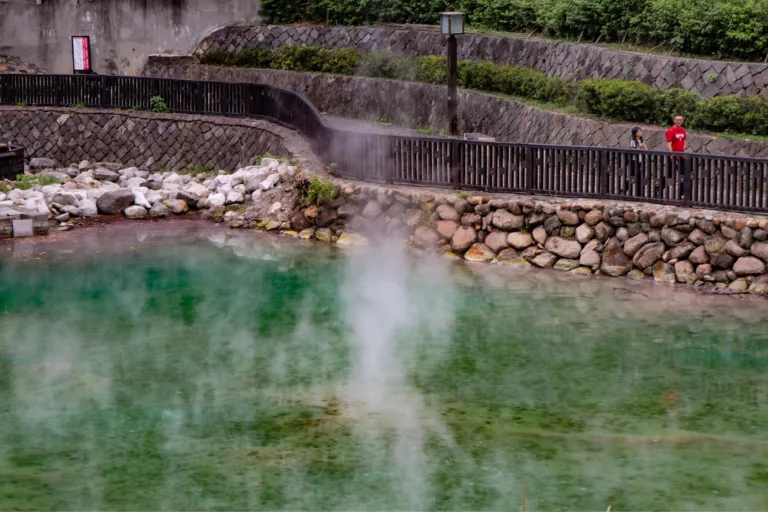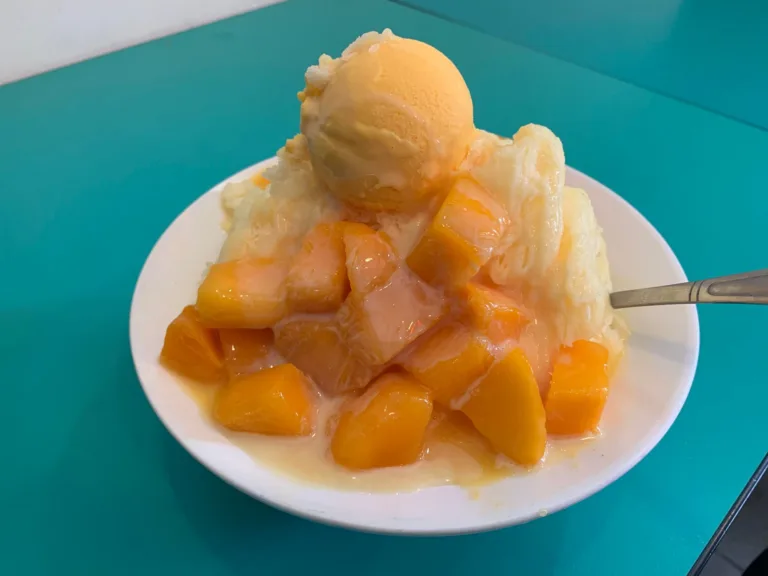Mangoes are one of the best aspects of living in Taiwan. Taiwan mangoes are the best. They are simply the king of fruit. Also, many mango varieties can only be found in Taiwan. The only downside is Mango season only lasts for a few short months during the summer in Taiwan. In this guide, we will introduce you to over 50 types of mangoes: the most common types, as well as uncommon ones, how to buy them, and how to eat them.
If you are interested in other Taiwan fruits, you can also check out our full Taiwan fruit guide here.
History of Mangoes in Taiwan 台灣芒果的歷史
According to historical Records, Mangoes were first introduced to Taiwan by the Dutch in the 1600s, who brought them from areas they colonized in Malaysia. Mangoes originally came from northeastern India, and are not native to the island of Taiwan. The first mango trees planted in Taiwan were called Tu Mangoes (土芒果 tǔ mángguǒ), literally earth mango or local mango) which naturally have dark green skin when ripe and have more texture. In Taiwanese or Hokkien, Mangoes are called suāinn-á.
During the Japanese Era of Taiwan, White (懷特, huái tè) and Heixiang (黑箱芒果, Hēi xiāng máng guǒ) mango varieties were imported into Taiwan.
In 1954, the first Irwen Mango (愛文芒果, Ài wén máng guǒ) was first cultivated in Taiwan as well as Haden (海頓, hǎi dùn), Zill (吉祿, jí lù), Kent (肯特, kěn tè), and Keitt (凱特, kǎi tè) mango varieties, which were imported from the USA. Because Zill mangoes were small and too soft for shipping, they never took off commercially. Kent mangoes also were not commercially produced because of diseases and transport issues. In 1974, a new hybrid mango called Jinhuang (金煌芒果, Jīn huáng máng guǒ) was created in Taiwan from cross-pollinating White (懷特, huái tè) and Keitt (凱特, kǎi tè) mango varieties. At the time, people thought Jinhuang Mangoes resembled the scrotum of a bull, so it was first called gû-lān-pha-suāinn (牛懶趴檨). Currently, Irwen Mango (愛文芒果, Ài wén máng guǒ) and Jinhuang Mango (金煌芒果, Jīn huáng máng guǒ) are the two most popular mango types sold in Taiwan.
From the 1970s onward, Taiwan began making its own unique and hybrid varieties of Mangoes through cross-pollination including Jin Mi (金密, jīn mì), Zhuo An Nan (桌安南, zhuō ān nán), Nong Min Dang (農民黨, nóng mín dǎng), Yu Wen (玉文, yù wén), Man Wen (慢文, màn wén), Mi Xue (蜜雪, mì xuě), and Shan Lin No. 1 (杉林一號, shān lín yī hào) to name a few. Recently, Nanhua District of Tainan City, in particular, has been responsible for creating many new Mango variety types, such as Red Ivory (紅象牙, hóng xiàng yá), Guxiang (古香, gǔ xiāng), World’s Number One Mango (世界第一芒果, shì jiè dì yī máng guǒ), Mihuang (蜜煌, mì huáng), Manxishi (慢西施, màn xī shī), Manyuwen (慢玉文, màn yù wén), Yuwen No. 6 (玉文6號, yù wén 6 hào), Qiuxiang (秋香, qiū xiāng), Little Jinmi (小金密, xiǎo jīn mì), and the newest variety Wenshan (文山, wén shān) which was first harvested in 2024. We can expect new mango varieties to continue to be cultivated in the future.
How Mangoes are Grown and Cultivated 芒果的培育
Mangoes are first grown from tree sprouts which can take anywhere from 3-10 years to mature. During the springtime, mango trees then start to flower and are pollinated by house flies and fruit flies. In order to attract other pollinators such as butterflies and honeybees, farmers often use fertilizer with strong odors such as kitchen waste and rotten fish.
Where Mangoes are Grown in Taiwan 台灣的芒果故鄉在哪裡?

When I think of the home of mangoes “芒果故鄉” my mind will always go to the giant mango statue in Fangshan Township of Pingtung, which declares itself the Mango capital of Taiwan. It’s on the road to Kenting, and you can always find lots of mango stands there. However, Tainan is also known as the Mango Capital of Taiwan, with Yujing and Nanhua being particularly famous for their mangoes.
While it is true that most commercially grown mangoes are found in the south where it is hotter, such as Tainan, Kaohsiung, and Pingtung, mangoes are grown all over Taiwan at lower elevations.
Nutritional Value of Mangoes 芒果的養分
Mango meat is rich in Vitamin A, Vitamin C, and Vitamin D, as well as carbohydrates, dietary fiber, folic acid, and trace amounts of calcium, phosphorus, iron, potassium, and magnesium. Mango is known for such health effects as inhibiting brain cell death. In Chinese medicine, mango is known as a “cooling” food to help with dehydration and is used for helping with nausea. Mango is also found to help reduce the risk of breast cancer and colon cancer.
Where Taiwan Mangoes are Sold and How to Buy Them 怎麼買台灣芒果
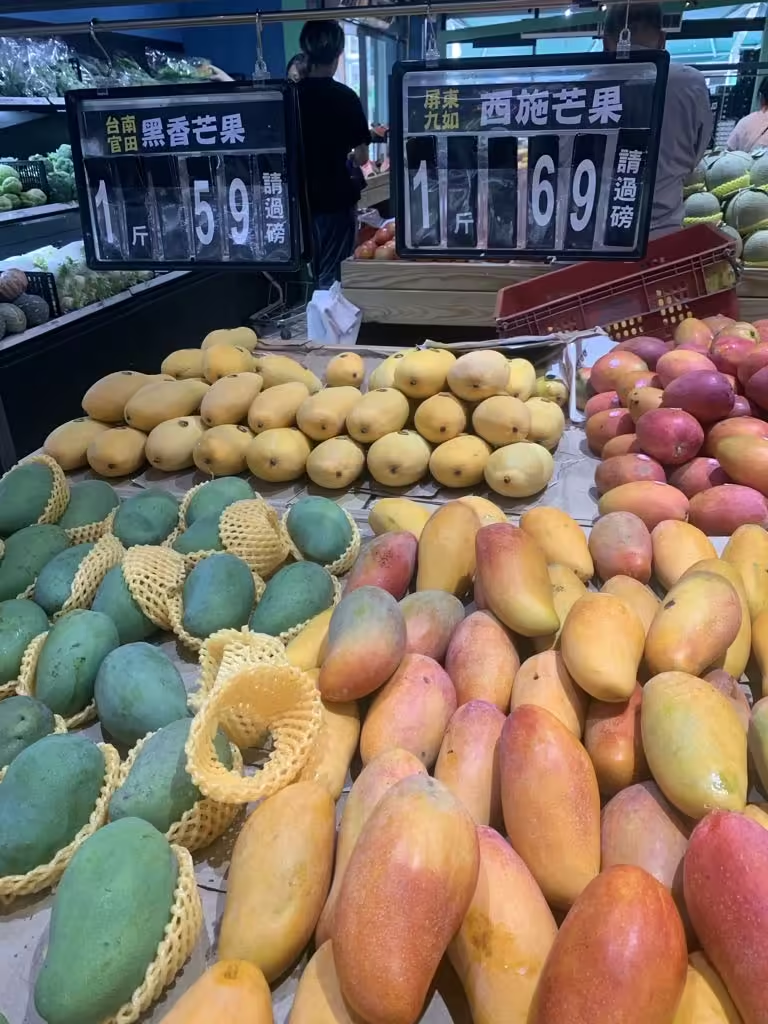
You can buy mangoes at fruit and vegetable stands, wet markets, morning markets, and supermarkets during mango season from May to September. I buy fresh Taiwanese fruit daily. After years of visiting my local fruit stand, I can offer some general advice, though I’m not an expert.
If you visit Taiwan, you’ll quickly discover specialty fruit shops and stands scattered all over the island, offering fresh fruit around the clock. Vibrant morning markets also specialize in selling fresh fruit and vegetables daily, except on Sundays and Mondays. With fruit being abundant, easy to find, and wonderfully delicious, there’s no need to buy your fruit at 7-11.
Tip: To find the most ripe and sweet mangoes, feel the mango to see if it is soft or hard. Softer mangoes are typically sweeter and harder mangoes are typically more sour. However too soft of a mango probably means it has lost its texture and is about to start rotting (parts of the inside may already be rotten). It is best to find mangoes that are just a little bit soft to the touch.
Taiwan Weights and Pricing (重量與價錢):
Taiwan measures its fruit and vegetables using Taiwan Catty (斤 Jīn) which is roughly 600 grams. So, everything you see is usually priced as per 600 grams, or sometimes they will price each fruit individually. In my experience, it is cheaper to buy fruit in bulk (such as 4 Irwen Mangoes for 100 NT), but usually, mangoes are only sold by the catty. I have only ever seen Irwen sold in bulk because they are the most common type of Mango in Taiwan.
Measure words: There are special measure words for each fruit. I will list some of the measure words here for your reference:
根 (Gēn) is used to describe individual bananas
條 (tiáo) is used to describe long things like corn, carrots, etc.
顆 (kē) is used to describe most round fruits. You want to use 顆 (kē) when describing mangoes.
串 (chuàn) used to describe a cluster of grapes, bananas, Leechees, etc.
Seasonality of Mangoes (水果季節性):
Mango Season in Taiwan lasts roughly from May to September. Taiwan’s mangoes are highly seasonal, especially locally grown mangoes. If you are eating mangoes out of season in Taiwan, it probably means that they are preserved in cans or imported from the Philippines or Thailand. It is important to note that external factors such as heavy rains, droughts, and typhoons can have a big effect on fruit prices, and it can take many months for prices to stabilize.
Ceremonial Use (祭拜品)
Taiwan mangoes are especially important to Taiwanese people because they are often used in sacrifices to gods and ancestors. For this reason, Taiwanese people love to buy super expensive fancy mangoes to give as offerings. After the ceremony, they will eat the fruit themselves.
Common Types of Taiwan Mangoes 常見的台灣芒果
In this blog, we will give an introduction to each of the common mangoes in Taiwan, explain their flavor and texture, what time of year you can buy them, the average price, and other details.

The list below is made from mangoes that were sold from my local fruit stand. Some are more common than others, but just know that Irwin and Jinhuang are the most common mango types in Taiwan. Also please note that some mangoes have multiple names, and some of the names may overlap. Now let’s get this list started!
Irwen Mango (愛文芒果, Ài wén máng guǒ)
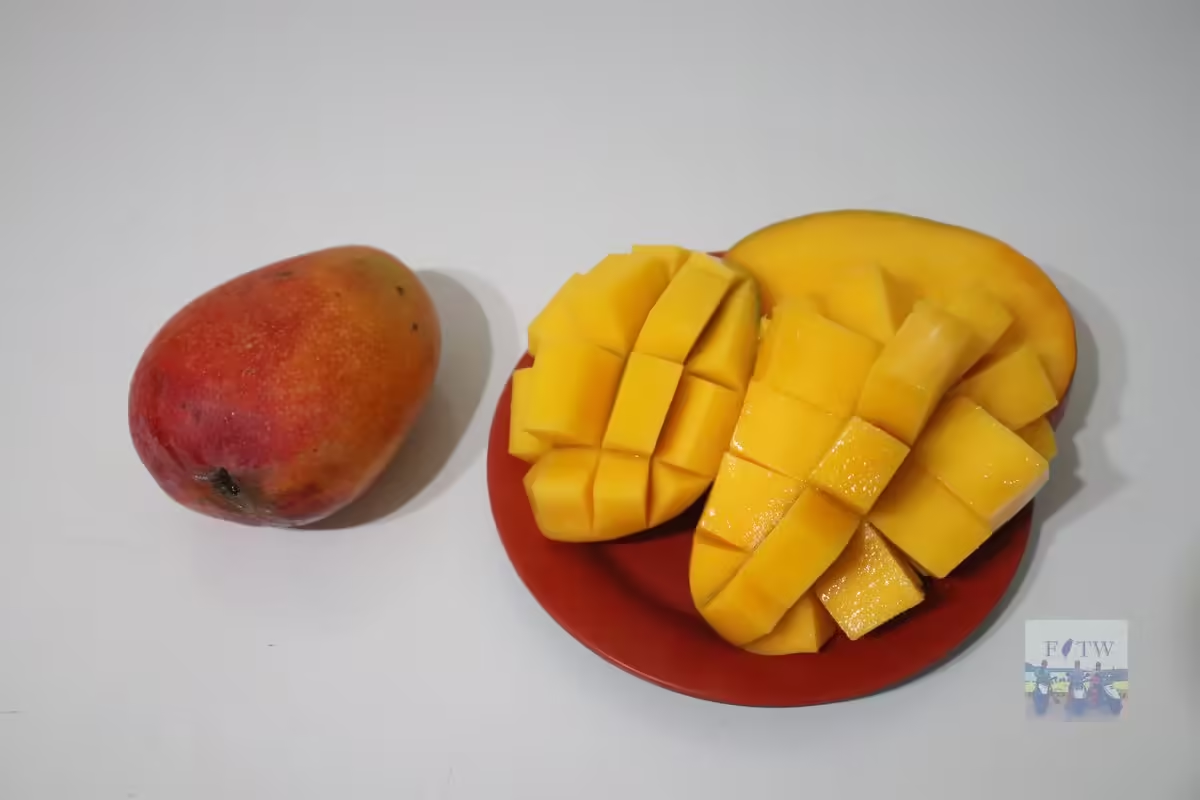
Irwin Mango is the most popular type of mango in Taiwan and you will be sure to see this type of mango at almost every fruit stand on the island. It is one of the sweetest and most fragrant mango types, and also has a soft, creamy texture, making it a winner from year to year. Most dried mango is also made from Irwins. Also, because more of these mangoes are grown, the price for these mangoes is a bit cheaper. However, Irwins do have a bit bigger pit inside of them, meaning you will not be getting as much meat for the money as Jinhuang Mangoes. There are also other varieties of Irwin such as Pearl Mangoes (珍珠芒果) which is a smaller version of the same mango picked before it is grown, and there is also a big version called Big Irwin (大愛文).
Average price: 49-89 NT per catty (one catty is about two Irwins)
Season: April to July
Jinhuang Mango (金煌芒果, Jīn huáng máng guǒ)

Jinhuang Mangoes are one of the largest varieties of mangoes in Taiwan, and they are also very popular. I would say that they are the second most popular mango type in Taiwan. They are not quite as sweet as Irwins, but there is way more mango flesh per pound that you are getting. Also, their texture is a bit more firm than Irwins and they have a slightly longer shelf life. Personally, I like Jinhuang Mangoes the best, especially when feeding my family, because they are the best mango for the money and can last longer in the fridge.
Average price: 39-59 NT per catty (one catty is about one Jinhuang)
Season: May to August
Summer Snow (Xiaxue) Mango (夏雪芒果, Xià xuě máng guǒ)
Xiaxue Mangoes, also known as Summer Snow, or Kaohsiung No. 3 (高雄3號, Gāo xióng 3 hào), are very sweet and probably have the least amount of texture to them; it is like biting down into yogurt. It is also said they have a more milky flavor to them. Because of this, they are often added to desserts.
Average price: 69-89 NT per catty (one catty is about one Jinhuang)
Season: June to July
Keitt Mangoes (凱特芒果, kǎi tè máng guǒ)
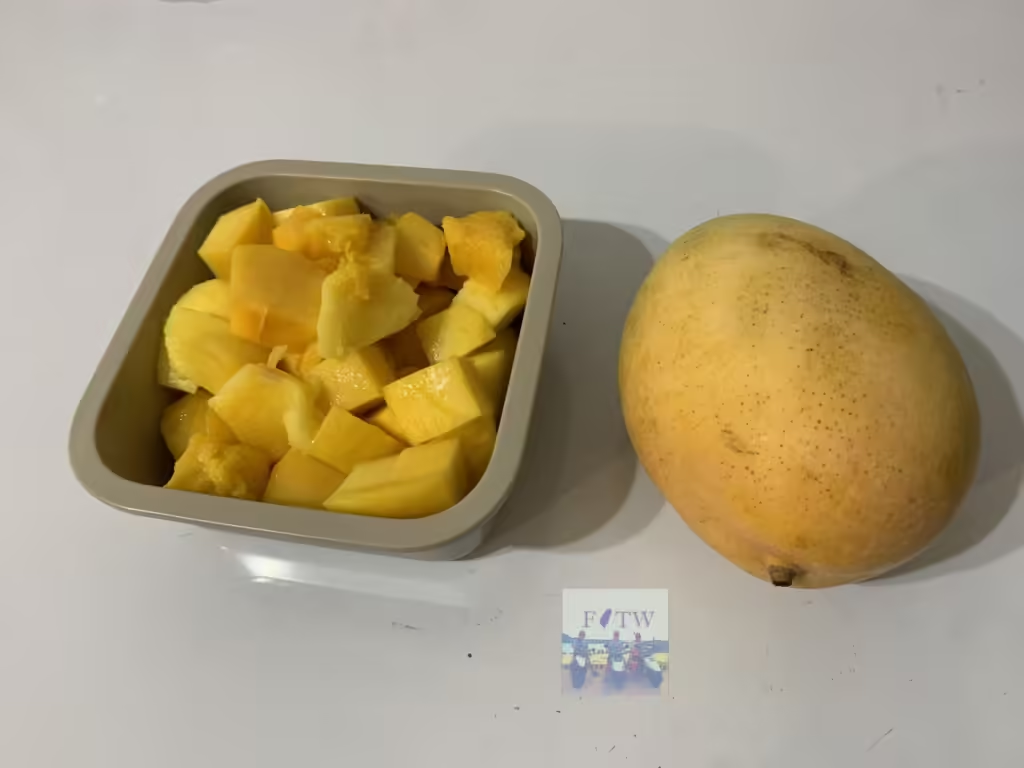
Keitt Mangoes have a very firm texture and are more sour than other popular mango types. However, the best aspect of Keitt Mangoes is that they are available all into the fall when other mango types are not available. Compared with all other types of mango, they are harvested latest in the year.
Average price: 69-89 NT per catty (one catty is about one Jinhuang)
Season: August to October
Red Keitt Mangoes (紅凱特芒果, hóng kǎi tè máng guǒ)
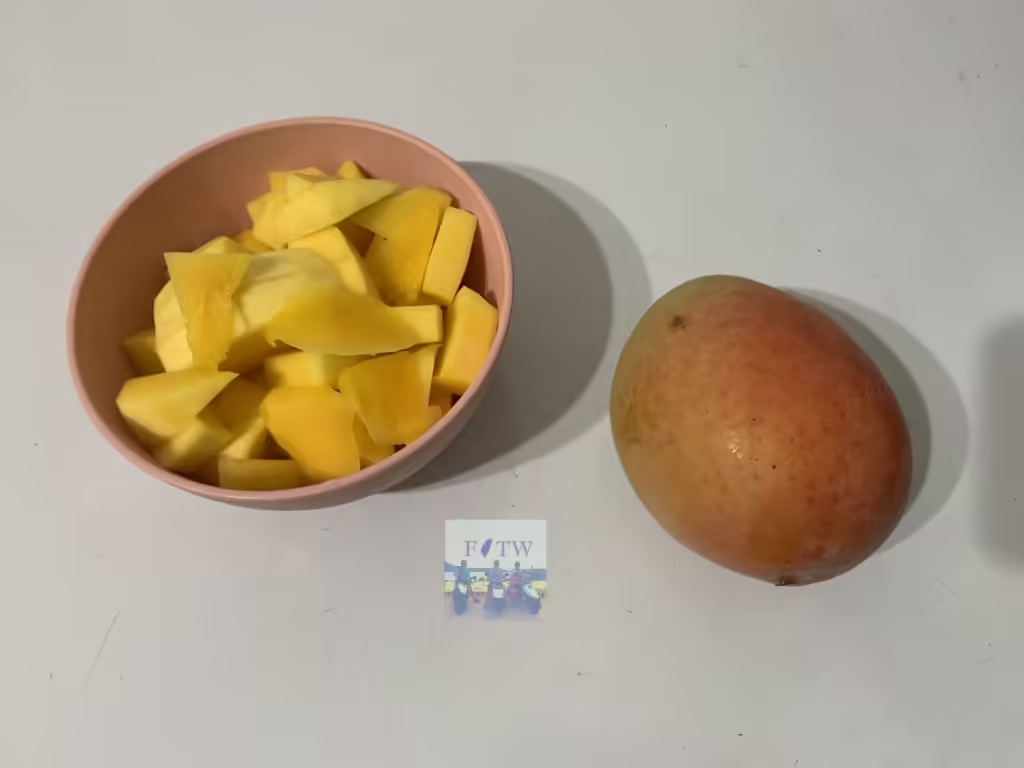
Red Keitt Mangoes are like a cross between Irwins and regular Keitt Mangoes. They have a sweet and sour taste like Keitt Mangoes, but their texture and flavor are similar to Irwin Mangoes. I feel like they are a rare breed of mango, but they are still sold at my local fruit stand.
Average price: 79-100 NT per catty (one catty is about one Jinhuang)
Season: August to September
Yuwen Mango (玉文芒果, Yù wén máng guǒ)
Yuwen Mangoes, also known as Red Jinhuang (紅金煌, hóng jīn huáng) are about the same size as Jinhuang Mangoes, but with a bit firmer texture, and flavor and color more similar to Irwin. They are also a great value for the money, are about the same price as Jinhuangs, and more and more of them are being grown. However, personally, I still prefer the taste and texture of Jinhuang Mangoes.
Average price: 39-59 NT per catty (one catty is about one Jinhuang)
Season: May to July
Xishi Mango (西施芒果, Xī shī máng guǒ)
Xishi Mango is perhaps the best mango I have ever tasted. It is also the sweetest mango I have ever tasted, which tells you about my taste buds. The perfect amount of sweetness, aroma, and soft texture nearly sent my tastebuds to heaven. The only problem with these is they are a bit more expensive than Irwen and Jinhuang, but you can still see them in most fruit stands throughout Taiwan.
Average price: 59-79 NT per catty (one catty is about one Xishi)
Season: July to August
Heixiang Mango (黑箱芒果, Hēi xiāng máng guǒ)
Heixiang Mangoes, also known as Wuxiang Mangoes (烏香芒果, wū xiāng máng guǒ) or Emerald Mangoes (綠寶芒果, lǜ bǎo máng guǒ) have the darkest green skin of any mango. Even though they look unripe on the outside, on the inside they are sweet, and their aroma is reminiscent of Leechee or Longan, which to me tastes like a citrus fruit. Anyways, it has one of the most unique aromas of any mango and I think they are my wife’s favorite. They are also a bit less sweet and more sour than other mango types, with a bit firmer texture.
Average price: 59-79 NT per catty (one catty is about one Heixiang)
Season: June to July
Peach Mango (水蜜桃芒果, Shuǐ mì táo máng guǒ)
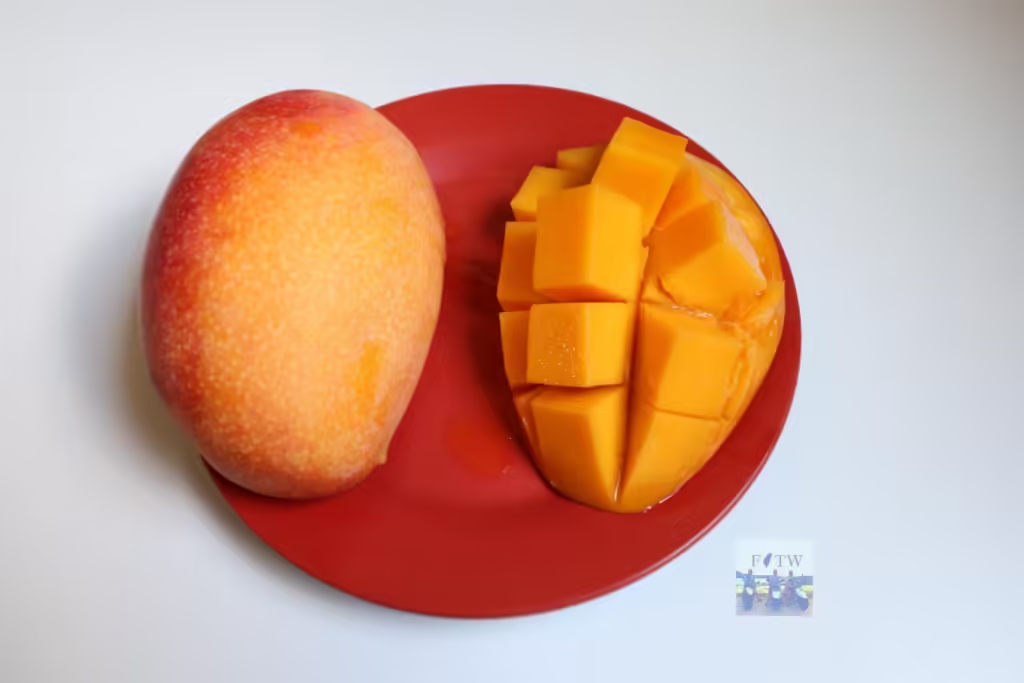
Peach Mangoes, also known as Hong Long (Red Dragon) Mango (紅龍芒果, hóng lóng máng guǒ) or Red Jinhuang (紅金煌, hóng jīn huáng) (not to be confused with Yuwen which are also known as Red Jinuang) are a little bigger than Irwinds and have a redish yellow or orange color like a peach. It is also said that the aroma is similar to a peach. These are also some of the best mangoes I have ever tasted, with a soft texture, and I would say the sweetness level is very high.
Average price: 69-89 NT per catty (one catty is about two Peach Mangoes)
Season: May to July
Pipa Mango (枇杷芒果, Pí pá máng guǒ)
Pipa Mangoes are the smallest type of mango I have ever seen. They are also one of the most expensive. Their name comes because it is the same size as a loquat fruit (Pipa). They do have a nice aroma and the texture is quite juicy. I think they are a bit rare and are often used for ceremonies instead of consumption because they look cute.
Average price: 89-150 NT per catty (one catty is about two Pipa Mangoes)
Season: April to May
Other types of Mangos in Taiwan 其他芒果品種
- Sour unripe mangoes (芒果青, máng guǒ qīng) – very sour unripe green mangoes eaten in March to April, and often eaten frozen or with lots of sugar.
- Guifei (貴妃, guì fēi) aka Hongjinlong (Red Gold Dragon) (紅金龍, hóng jīn lóng) – a large red mango that looks like a mix of Yuwen and Xishi
- Wanqingxiang (萬清香, wàn qīng xiāng) aka Qilixiang (七里香, qī lǐ xiāng) – similar to Heixiang but more rare.
- Wanliziang (萬里香, wàn lǐ xiāng) – rare, said to be most sweetest mango ever.
- Wannianqing (萬年青, wàn nián qīng) – super rare and similar to Heixiang.
- Tu Mangoes (土芒果 tǔ mángguǒ) – the first type of mango originally brought by the Dutch to Taiwan
- White Mango (懷特, huái tè), also known as Banana Mango (香蕉芒果, xiāng jiāo máng guǒ), Ivory Mango (象牙芒果, xiàng yá máng guǒ) or Thailand Mango (泰國芒果, tài guó máng guǒ) – looks pale yellow or white, about the same size and shape as Jinhuang, and have soft texture.
- Jin Mi (金密, jīn mì) – a small yellow mango that is somewhat rare.
- Jinxing (金興, jīn xīng) – another small yellow mango that is somewhat rare.
- Zhuo An Nan (桌安南, zhuō ān nán), also known as Siji Mango (四季芒果, sì jì máng guǒ) or Dongmi Mango (冬蜜芒果, dōng mì máng guǒ) – a more popular mango that is similar to Xishi.
- Nong Min Dang (農民黨, nóng mín dǎng) – an early
- Man Wen (慢文, màn wén) – a medium-sized mango similar to Irwen.
- Tainan Mango No. 1 (台農1號, Tái nóng 1 hào), also known as Perfume Mango (香水芒果, xiāng shuǐ máng guǒ)
- Tainan No. 2 (台農2號, Tái nóng 2 hào)
- Tainan No. 3 (台農3號, Tái nóng 3 hào), also known as Jinai E (金愛E, jīn ài E)
- Shan Lin No. 1 (杉林一號, shān lín yī hào)
- Mi Xue (蜜雪, mì xuě) aka Kaohsiung No. 4 (高雄3號, Gāo xióng 4 hào)
- Taichung No. 1 (台中1號, Tái zhōng 1 hào)
- Sensation (聖心, shèng xīn), one of the original mango varieties imported from America
- Haden (海頓, hǎi dùn) – another one of the original mango varieties imported from America
- Apple Wen (蘋果文, píng guǒ wén), also known as Hongzhu Mangoes (紅竹, hóng zhú) that resemble apples.
- Big Apple Mango (大蘋果芒果, dà píng guǒ máng guǒ) – resembles a gigantic apple.
- Honglan (紅蘭, hóng lán) Mix of Irwen and Haden mangoes.
- Xiangwen (香文, xiāng wén) Rare mago type
- Jinfenghuang (Golden Phoenix) Mangoes (金鳳凰, jīn fèng huáng) – a rare hybrid made from Guifei, Jinhuang, Irwen, and Tumango.
- Yulin (玉林, yù lín)
- Manjinhuang (慢金煌, màn jīn huáng) looks like Jinhuang but thinner and longer
- Red Ivory (紅象牙, hóng xiàng yá) – rare and looks like a red white mango
- Guxiang (古香, gǔ xiāng) – also rare and resembles Tumango but more yellow
- World’s Number One Mango (世界第一芒果, shì jiè dì yī máng guǒ) – super rare, only sold in Nanhua, is green, and looks like a giant apple. It is said the be the heaviest mango on earth.
- Mihuang (蜜煌, mì huáng) rare
- Manxishi (慢西施, màn xī shī) – resembles Xizhi, is rare, and was cultivated in Nanhua
- Manyuwen (慢玉文, màn yù wén) – Resembles Yuwen, is rare and was cultivated in Nanhua
- Nanhua Yuwen No. 6 (玉文6號, yù wén 6 hào) a hybrid of Yuwen, is rare and was cultivated in Nanhua
- Qiuxiang (秋香, qiū xiāng) looks like Irwen, is rare, and was cultivated in Nanhua
- Wenshan (文山, wén shān) – green but looks like a white mango, first harvested in 2024, is rare, and was cultivated in Nanhua
- Little Jinmi (小金密, xiǎo jīn mì) – small and yellow, is rare and was cultivated in Nanhua
- Pearl Mangoes (珍珠芒果) – a smaller version of Irwin Mangoes picked before they are fully grown
- Big Irwin (大愛文) – a bigger version of Irwin Mangoes
- Zill (吉祿, jí lù) – one of the first mangoes grown in Taiwan but because Zill mangoes were small and too soft for shipping, they never took off commercially.
- Kent (肯特, kěn tè) Kent mangoes also were not commercially produced because of diseases and transport issues.
Besides the ten most common mangoes covered above, that is over 50 types of mangoes in Taiwan!
There are even more types of mangoes in Taiwan, but many of them are experimental and are not commercially available to the public.
Comparison Chart of Taiwan Mangoes 台灣芒果對照表
This list is for reference only.
| Name | Color | Size | Price (catty) | Season | Other |
| Irwen Mango (愛文芒果, Ài wén máng guǒ) | Red | Small | 49-89 NT | April to July | Most popular |
| Jinhuang Mango (金煌芒果, Jīn huáng máng guǒ) | Yellow | Big | 39-59 NT | May to August | #2 Most Popular |
| Xiaxue Mango (夏雪芒果, Xià xuě máng guǒ) / Kaohsiung No. 3 (高雄3號, Gāo xióng 3 hào) | Yellow | Medium | 69-89 NT | June to July | Milky Taste |
| Keitt Mangoes (凱特芒果, kǎi tè máng guǒ) | Yellow | Medium | 69-89 NT | August to October | Latest Harvest |
| Red Keitt Mangoes (紅凱特芒果, hóng kǎi tè máng guǒ) | Red | Medium | 79-100 NT | August to September | Late Harvest, Rare |
| Yuwen Mango (玉文芒果, Yù wén máng guǒ) / Red Jinhuang (紅金煌, hóng jīn huáng) | Red | Big | 39-59 NT | May to July | Mix of Irwin and Jinhuang |
| Xishi Mango (西施芒果, Xī shī máng guǒ) | Red | Big | 59-79 NT | July to August | Very sweet |
| Heixiang Mango (黑箱芒果, Hēi xiāng máng guǒ) / Wuxiang Mangoes (烏香芒果, wū xiāng máng guǒ) / Emerald Mangoes (綠寶芒果, lǜ bǎo máng guǒ) | Green | Medium | 59-79 NT | June to July | Tastes like Leechee or Longan |
| Peach Mango (水蜜桃芒果, Shuǐ mì táo máng guǒ) / Hong Long (Red Dragon) Mango (紅龍芒果, hóng lóng máng guǒ) / Red Jinhuang (紅金煌, hóng jīn huáng) | Red / Yellow | Medium | 79-99 NT | May to July | Tastes like a peach |
| Pipa Mango (枇杷芒果, Pí pá máng guǒ) | Red / Yellow | Small | 89-150 NT | April – May | Smallest Mango |
| Sour unripe mangoes (芒果青, máng guǒ qīng) | Green | Depends | – | April – March | Super sour, no sweetness |
| Guifei (貴妃, guì fēi) / Hongjinlong (Red Gold Dragon) (紅金龍, hóng jīn lóng) | Red / Yellow | Big | – | July | Very Sweet |
| Wanqingxiang (萬清香, wàn qīng xiāng) / Qilixiang (七里香, qī lǐ xiāng) | Green | Medium | – | June – July | Very Rare |
| Wanlixiang (萬里香, wàn lǐ xiāng) | Green | Medium | – | June – September | Rare |
| Wannianqing (萬年青, wàn nián qīng) | Green | Medium | – | August – October | Rare |
| Tu Mangoes (土芒果 tǔ mángguǒ) | Green and Yellow | Small | – | April – May | Taiwan’s first mango |
| White Mango (懷特, huái tè) / Banana Mango (香蕉芒果, xiāng jiāo máng guǒ), / Ivory Mango (象牙芒果, xiàng yá máng guǒ) / Thailand Mango (泰國芒果, tài guó máng guǒ) | White / Yellow | Big | – | July – September | One of the first mangos imported |
| Jin Mi (金密, jīn mì) | Yellow | Small | – | July – August | Fragrant |
| Zhuo An Nan (桌安南, zhuō ān nán) / Siji Mango (四季芒果, sì jì máng guǒ) / Dongmi Mango (冬蜜芒果, dōng mì máng guǒ) | Yellow | Medium | – | June – August | Fragrant and soft |
| Nong Min Dang (農民黨, nóng mín dǎng) | Reddish Yellow | Medium | – | June – July | Mix of Irwen and White |
| Man Wen (慢文, màn wén) | Red | Medium | 79-89 NT | July – August | Big form of Irwin |
| Tainan Mango No. 1 (台農1號, Tái nóng 1 hào) / Perfume Mango (香水芒果, xiāng shuǐ máng guǒ) | Yellow and Red | Medium | – | July – September | Tastes like coconut |
| Tainan No. 2 (台農2號, Tái nóng 2 hào) | Yellowish Pink | Medium | – | May – June | Juicy |
| Tainan No. 3 (台農3號, Tái nóng 3 hào), also known as:Jinai E (金愛E, jīn ài E) | Yellow | Medium | – | June – July | Mix of Irwin and Jinhuang |
| Shan Lin No. 1 (杉林一號, shān lín yī hào) | Red | Medium | – | June – September | Sweet and fragrant |
| Mi Xue (蜜雪, mì xuě) aka Kaohsiung No. 4 (高雄3號, Gāo xióng 4 hào) | Red | Medium | – | June – July | Made in 2012 |
| Taichung No. 1 (台中1號, Tái zhōng 1 hào) | Red /Yellow | Medium | – | August – September | Juicy and soft |
| Sensation (聖心, shèng xīn) | Red | Medium | – | July | Soft texture |
| Haden (海頓, hǎi dùn) | Red / Yellow | Medium | – | June – July | Heavy texture |
| Apple Wen (蘋果文, píng guǒ wén) / Hongzhu Mangoes (紅竹, hóng zhú) | Red | Medium | 79-89 NT | June – September | Looks like an apple |
| Big Apple Mango (大蘋果芒果, dà píng guǒ máng guǒ) | Red | Big | – | June – September | Looks like a huge apple |
| Honglan (紅蘭, hóng lán) | Red / Yellow | Big | – | May – July | Like Jinhuang but more texture |
| Xiangwen (香文, xiāng wén) | Yellow | Small | – | July | Rare |
| Jinfenghuang (Golden Phoenix) Mangoes (金鳳凰, jīn fèng huáng) | Yellow and Red | Big | – | June – July | Rare |
| Yulin (玉林, yù lín) | Yellow | Big | – | May – July | Round |
| Manjinhuang (慢金煌, màn jīn huáng) | Yellow | Big | – | May – August | Longer and thinner than Jinhuang |
| Red Ivory (紅象牙, hóng xiàng yá) | Red | Big | – | June – July | Rare |
| Guxiang (古香, gǔ xiāng) | Green | Small | – | April – May | Variation of Tu Mango |
| World’s Number One Mango (世界第一芒果, shì jiè dì yī máng guǒ) | Green | Big | – | August – October | World’s Heaviest Mango |
| Mihuang (蜜煌, mì huáng) | Yellow / Red | Medium | – | May – June | Rare |
| Manxishi (慢西施, màn xī shī) | Yellow | Big | – | July – August | Yellow version of Xishi |
| Manyuwen (慢玉文, màn yù wén), also known as Yuwen No. 6 (玉文6號, yù wén 6 hào) | Red | Medium | – | July – August | Rare |
| Qiuxiang (秋香, qiū xiāng) | Red / Yellow | Big | – | July | Late Harvest, rare |
| Wenshan (文山, wén shān) | Green | Big | – | June – July | Rare |
| Little Jinmi (小金密, xiǎo jīn mì) | Yellow-green | Small | – | July – August | Rare |
How to Eat and Enjoy Mangoes 芒果的吃法
There are many ways that mango can be enjoyed, and I would say there is no right or wrong way to eat one. However, there are more messy ways to eat and less messy ways. If you don’t want to get mango juice stains all over your clothes, I suggest cutting them first.
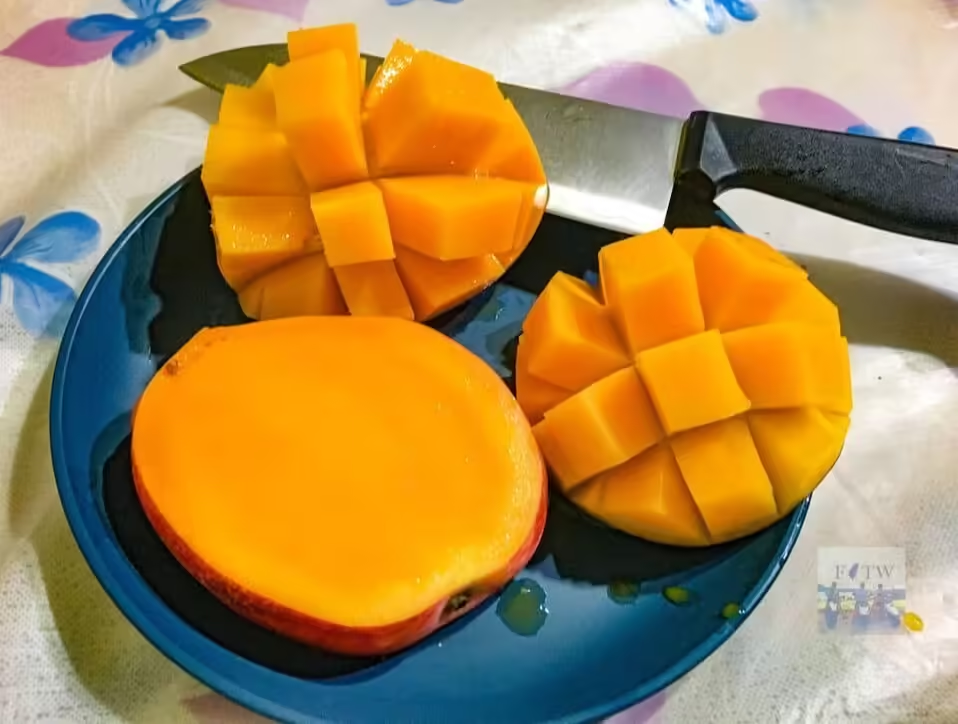
The Proper Way to Cut Mangoes 芒果正確的切法
My favorite way to eat a mango is by cutting the mango into thirds on the outside of the seed and then cutting the two outside thirds into cubes as per the photos above. You can hold onto the mango and eat the cubes off the skin by sucking them up.
For a visual guide of how to cut mangoes, check out the video above by Jason’s Table of TaiwanPlus.
Mango Ice 芒果冰

The next best way to eat mangoes is with ice or ice cream. Mango Shaved Ice is one of the most popular desserts in Taiwan, but usually, you can only find it in the summer. The best kind of Mango Shaved Ice will be made with a milk base and have ice cream and sweetened condensed milk.
If you can’t find Mango Ice, you can always find mango-flavored ice cream in tubs at supermarkets all over Taiwan year round.
Mango Soft Serve 芒果雪淇淋

Mango soft serve comes and goes at 7-11 and Family Mart. When I first came to Taiwan, Family Mart had mango soft serve all summer and I would have a cone almost every single day. It is one of their most popular soft-serve flavors, so you can expect it to come back.
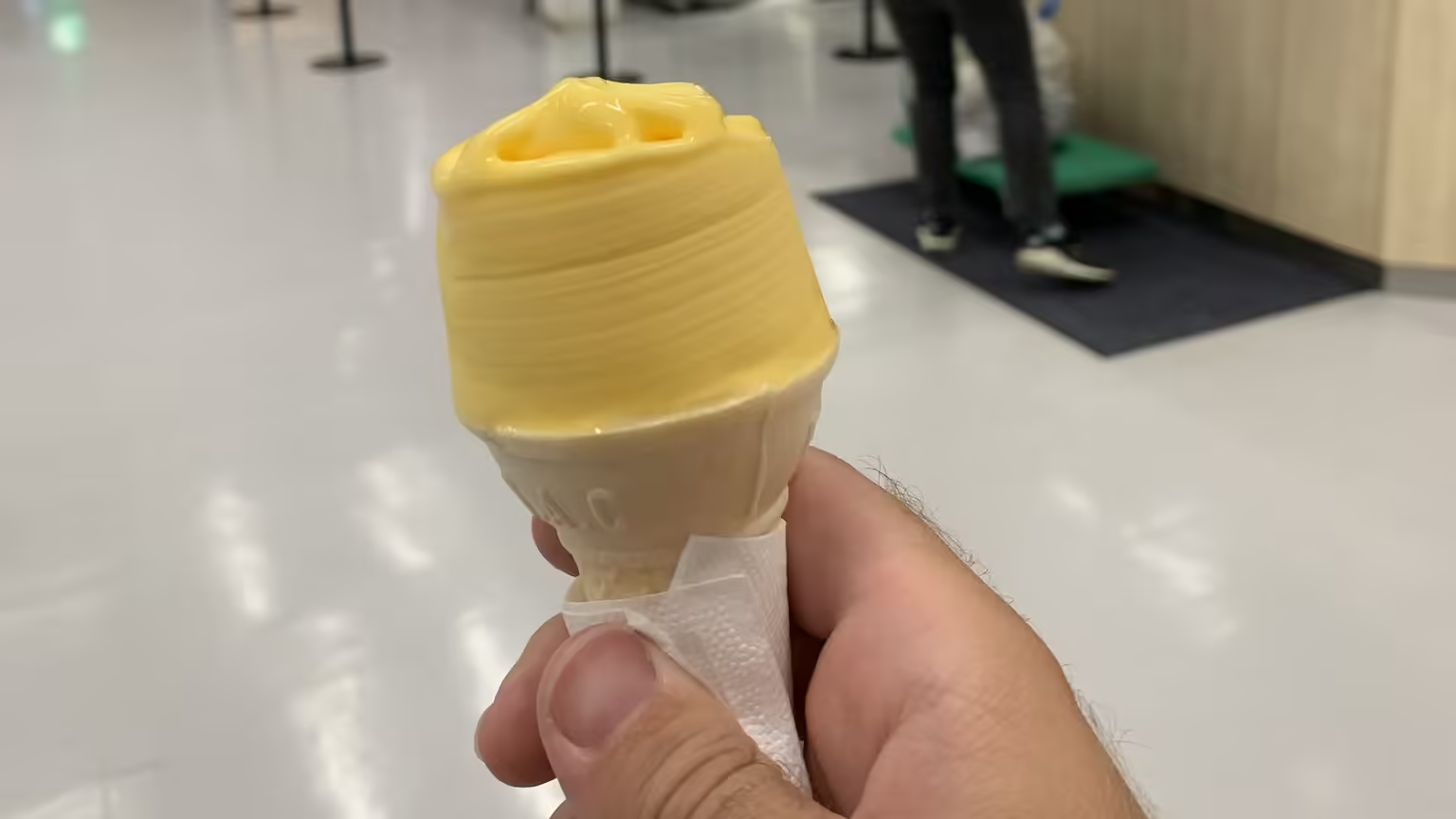
Ikea also had mango soft serve for a time, and you can bet it will be coming back.
Mango Pizza 芒果披薩
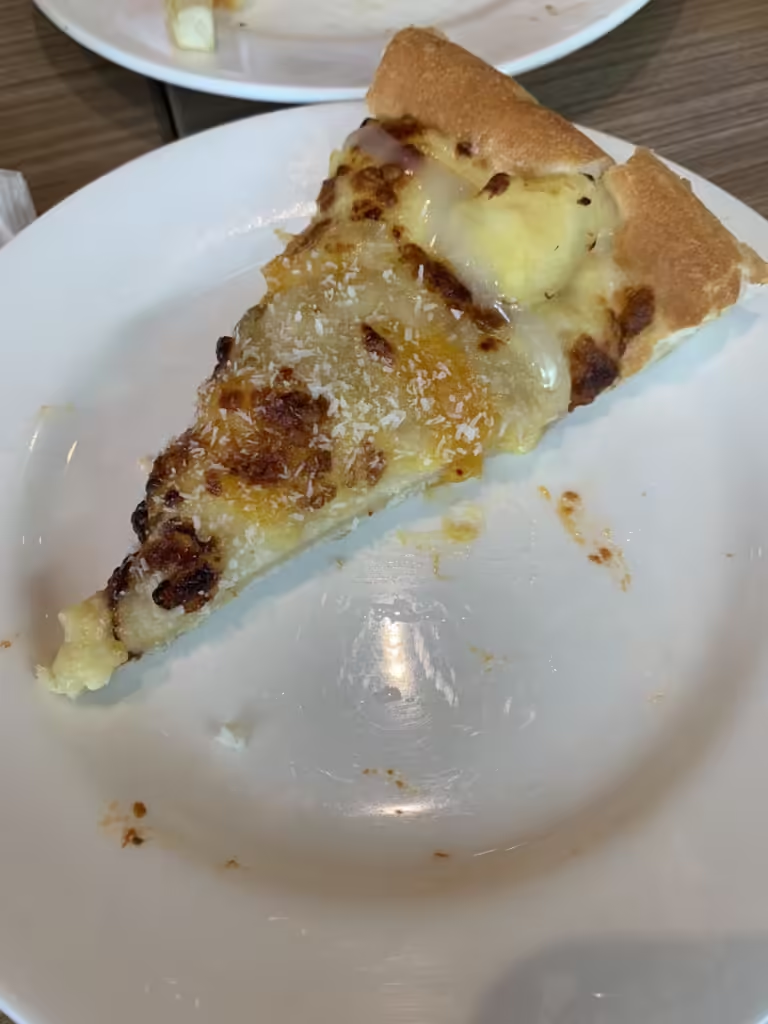
Taiwan’s Pizza Hut has many odd flavors of pizza. One time, I tried their Durian Mango Pizza. The Mango helped to balance out the Durian so it ended up tasting pretty good.
Other Awesome Ways to Enjoy Mango 其他吃法
Some other great ways to enjoy mangoes are as follows:
- Mango Juice – mango juice on its own is awesome.
- Dried Mango – great to eat year round. Usually dried mango has a tough texture with more sugar added. This is also a popular gift.
- Mango Milk – mango milk is one of the best flavors of milk out there, tied with papaya milk in my book.
- Mango Smoothie – also a popular drink you can find all over Taiwan.
- Mango Cake – mango on cake or in cake, any kind of cake, is always a win.
- Mango Pudding – mango inside pudding is also amazing.
- Mango Mango Mango!
Taiwan Food and Fruit-Related Tours 台灣食物之旅遊
You can eat your way through Taipei through such tours and activities as Taiwanese Breakfast Cooking Class in Taipei, Taiwanese Gourmet Cooking Class in Taipei, or Xiao Long Bao, Chicken vermicelli with mushroom and sesame oil, Tofu strips salad, Bubble milk tea. Taiwan Traditional Delicacies Cooking Class and more on TripAdvisor here.
You can also search for tours on Klook here, or KKday here.
Thanks for reading and stay tuned for more of our Taiwan food guides to come.



